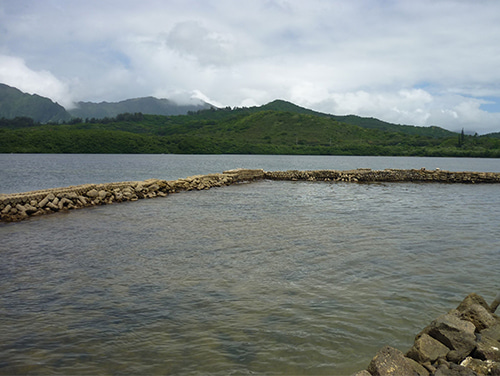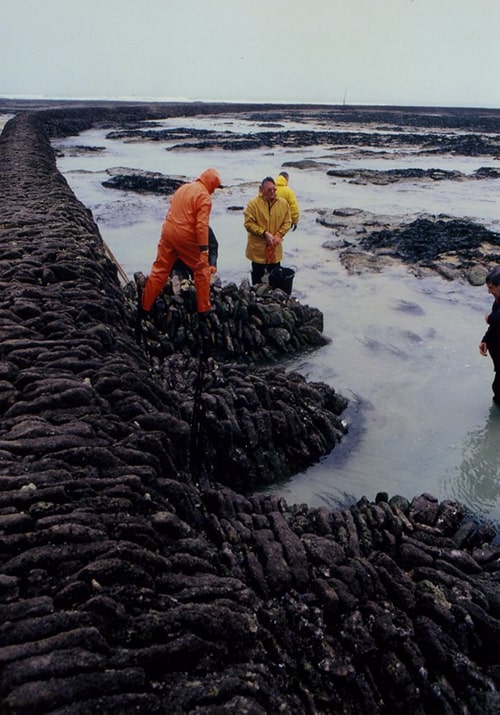One Planet, One Ocean
United Nations Decade of Marine Science and Tokyo University of Marine Science and Technology
What is the United Nations Decade of Marine Science?
2021 marks the beginning of the United Nations Decade of Ocean Science for Sustainable Development.In order to contribute to the achievement of related SDGs, including Goal 10 of the SDGs, by promoting marine science, we will work intensively over the next 14 years until 2030. Activities are planned for seven social outcomes such as "clean seas" and "productive seas."
Seven Goals "Seven Seas"
references:United Nations Decade of Ocean Science website
Investigate the effects of pollutants on humans and organisms.
Investigate changes in ecosystems caused by sudden changes in the marine environment.
We aim for a rich sea where fish can be caught forever.
We will be able to accurately predict various phenomena in the ocean.
Protect your life from various marine disasters.
We will enable people around the world to make effective use of marine information.
Through understanding of the sea, we aim to create a sea where people around the world take action to use and protect the sea.
Our university's efforts certified and adopted for the United Nations Decade of Marine Science
- 01 Ishihimi Conservation Project
- 02 Aquaculture Industry and Marine Literacy Education Promotion Project
- 02 Aquaculture Industry and Marine Literacy
Education promotion project - 03 Ocean Cities (OC-NET) Program (in preparation)
- 03 Ocean Cities (OC-NET)
Program (in preparation)
01 Ishihimi Conservation Project
Professor Satofumi Iwabuchi, Department of Maritime Systems Engineering, Academic Assembly
01 Ishihimi Conservation Project
Faculty of Science Maritime Systems Engineering Division
Prof. Satofumi Iwabuchi

project overview
- Officially titled “Indigenous Peoples, Traditional Ecological Knowledge, and Climate Change: Ishihimi as Symbolic Underwater Cultural Heritage,” the project aims to bring researchers, policy makers, non-governmental Strategies for organizations and others to work with local residents to protect and conserve Ishihimi, a traditional fishing gear that is a typical underwater cultural heritage, and the surrounding marine ecosystem, and to respond to global climate change. We will provide
- This project is centered on Tokyo University of Marine Science and Technology, which is a member school of the UNESCO Underwater Archeology Collaborative Network. It is organized by Universities (Korea), University of the Philippines, Trinity College (Ireland) and Nelson Mandela University (South Africa).
- The United Nations approved this project as a case study representing Goal 14 of the SDGs for the UN Ocean Conference.Through Ishihimi, we will work together with the United Nations to solve the various marine problems faced by all humankind internationally.
Message
Ishihimi fishing using ishihimi is a sustainable and environmentally friendly fishing method.Ishihimi is a large-scale stone wall built up along the shoreline.Various shapes such as circular arcs and arrowheads are distributed all over the world.Ishihimi is not only a tangible cultural heritage with archaeological value, but also has an aspect of intangible cultural heritage or a living cultural heritage. ecological knowledge.The spiritual world surrounding Ishihimi is a wonderful embodiment of the balance or harmony between the local people and nature over the past millennia.However, Ishihimi is now becoming a symbol of global climate change.Sea level rise and marine plastic problems are becoming factors that affect the fate of Ishibimi, and the climate crisis in the ocean has become an issue that requires the United Nations and UNESCO to find solutions for all of humanity. I'm here.

hawaiian fishpond

Ishihimi on the Shimabara Peninsula

Ishihimi in France
Related information URL
- facebook: The Underwater Cultural Heritage of Stone Tidal Weirs
- twitter: Underwater Cultural Heritage Of Stone Fish Weirs
- Safeguarding the Underwater Cultural Heritage of Stone Tidal Weirs on the Earth
- Indigenous People, Traditional Ecological Knowledge, and Climate Change: The Iconic Underwater Cultural Heritage of Stone Tidal Weirs
02 Aquaculture Industry and Marine Literacy Education Promotion Project
Academic Assembly Department of Ocean Policy and Culture Professor Takeshi Sasaki
02 Aquaculture Industry and Marine Literacy
Education promotion project
Faculty of Science Division of Ocean Policy and Culture
Professor Takeshi Sasaki
project overview
- This project is centered on Tokyo University of Marine Science and Technology, BUIK System Co., Ltd., ZEAL Co., Ltd., GO GREEN GROUP Co., Ltd., Takeshiba Area Management, Takeshiba Town Design, Tokyo, Minato Ward , school educational institutions, Minato UNESCO Association, local residents, and other multi-stakeholders.
- This project will implement marine literacy education for 2030 with the aim of reducing the environmental impact of aquaculture and water quality improvement using microbial fermented feed using food residue.

Message
As the world's population continues to grow, the importance of the aquaculture industry is also increasing.However, the expansion of the aquaculture industry is becoming a source of marine pollution caused by organic pollution, raising concerns from a sustainability perspective.This project will promote the following by focusing on conversion of food waste into feed by BUIK bacteria (more than 50 kinds of complex bacteria) technology and organic contamination reduction technology by bivalent iron ion supply system.
- 1.Environmentally friendly aquaculture and water quality improvement using microbial fermented food waste[2][3][XNUMX]
- 4.Establishment of sustainability evaluation method[XNUMX]
- 5.In addition to these, aquaculture farmers and consumers collaborate to realize marine literacy education using ICT that enhances relationship value[6][XNUMX]
- XNUMX.Furthermore, we established a methodology to assess the relationship between sustainable production and consumption in shallow waters.









